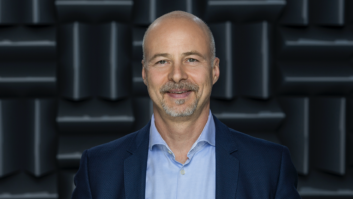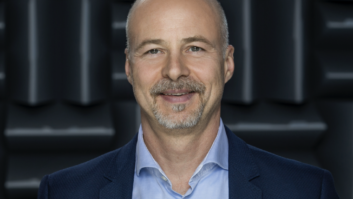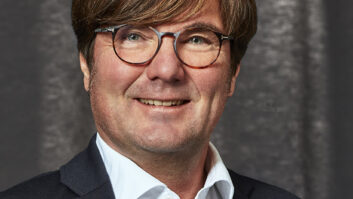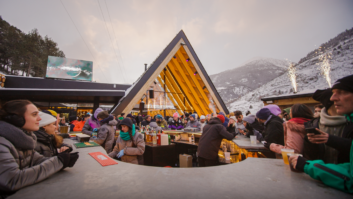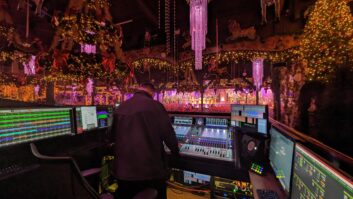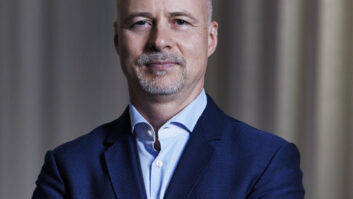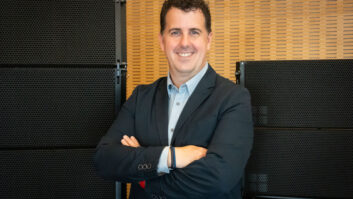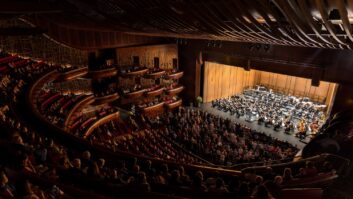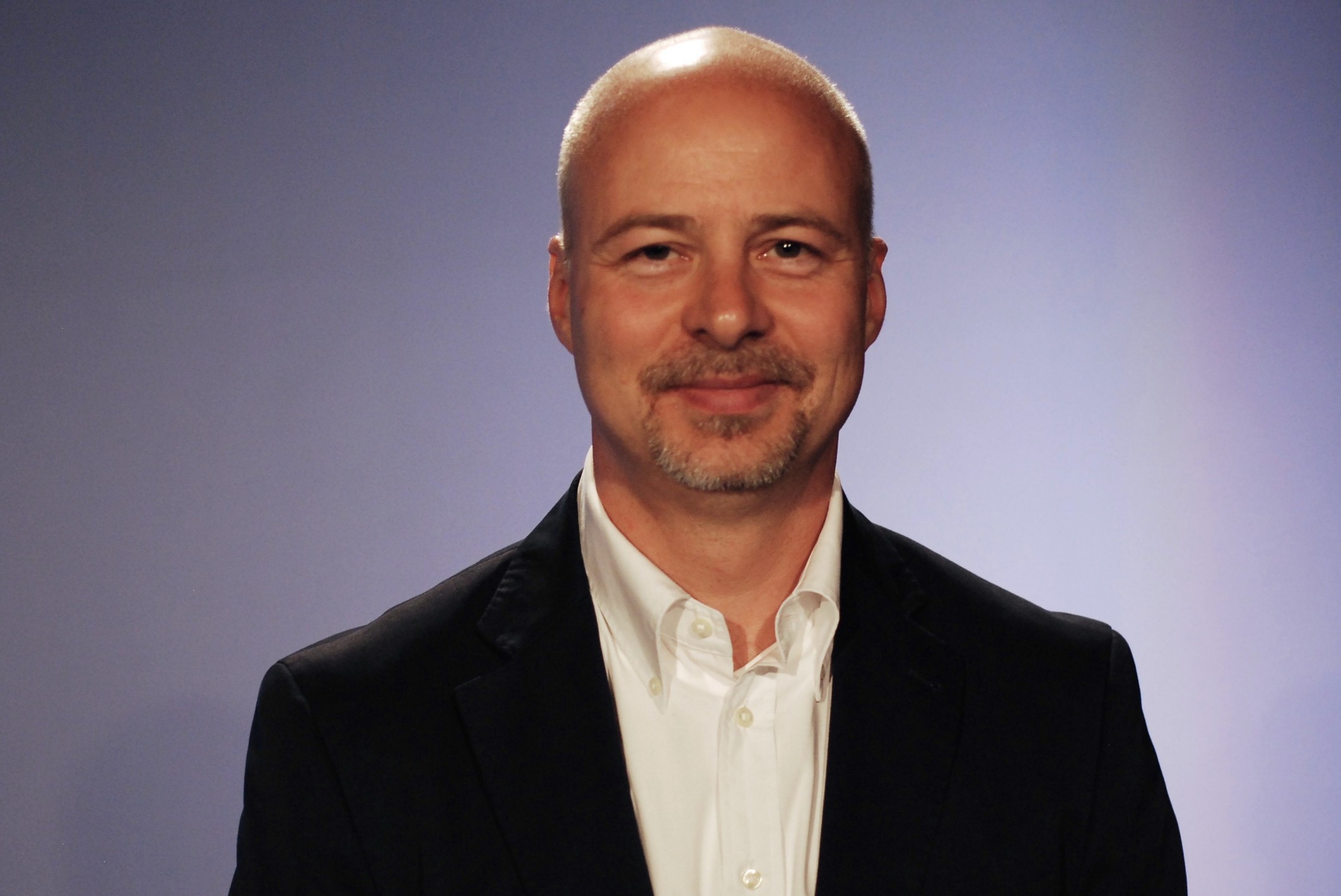
Six months into the role of CEO of the high-end audio manufacturer, Amnon Harman talks to Paddy Baker about his plans to increase emphasis on the installation sector.
What made you want to work in the professional audio industry?
It wasn’t only the audio industry that attracted me, it was also the management challenge that we have with d&b and the opportunity we have as a company.
I have a technical background as an aeronautical engineer, and I’ve always worked in technology. I believe that when you work at a company that can make a difference with technology, you have a big advantage. We can do that at d&b, and we prove it by bringing out blockbuster products every year or two.
The other thing is, there must be a market opportunity. The pro audio market is growing – so I’ve come into a company that can seize an opportunity in its market, and that attracts me.
Everything I’ve done in the past had to do with change management. I worked in the IT and operations department in Deutsche Bank, focused on software and IT infrastructure. We had a lot of acquisitions at the time, and I was responsible for post-merger integration. I saw what works and what fails when you’re working with people and trying to establish a new team, a new structure, a new business.
After that I was three years with a venture capitalist, and I invested in a software company called SUSE Linux, which was very similar to d&b. The challenge was to find a business model using open-source software without destroying the energy that everybody puts into it. Inside SUSE there was a very interesting mixture of people who wanted to make the world better, and whose enemy was Microsoft and people who wanted to commercialise things; but on the other side we had to keep the company profitable and make it grow. And that is very similar to the attitude at d&b of wanting to get the best quality of sound before thinking about commercial ambitions.
Where do you see the growth opportunities for d&b?
We divide the market into three segments: touring, which is 70% of our business; performance installations, such as theatres, opera houses, and houses of worship, where we position ourselves with our high quality of sound; and commercial installations, which are more of a challenge for us because quality of sound doesn’t stand in the foreground, it is things like purchase price and total cost of ownership.
There is quite a large market opportunity that we’re not addressing yet – there’s a lot of potential in the high end. The touring market is probably half the size of the performance installation market, and the performance installation market is half the size of the commercial installation market. There is quite a lot of market opportunity that we’re not addressing yet – there’s a lot of potential in the high end.
You’ve now been in the CEO’s chair for a little over six months. What have been your priorities?
Before I try to do anything, I need to understand how it works. So first I travelled globally and met with a lot of partners and customers, I looked at installations, I looked at how our touring business worked – to understand as much as possible how our partner base ticks, and what the market requirements are. That’s not only from a product perspective, but also support – what do people need, how long are the sales cycles and so on.
In parallel, I needed to understand the organisation here. The company grew very fast; in mentality we are still a fast-growing garage-based company, but in size, and in our market footprint, we are a mid-sized player. Our functions are co-ordinated centrally from our head office, but our customers are global. This creates a stretch in a fast-growing company that needs to be managed, and I needed to understand what processes need to be established or enhanced to support the growth we are going through.
So did you have to look at cultural issues as well as business processes?
Absolutely. If you think of the pedantic approach – in a good way – of a German engineer, and contrast that with the pragmatic approach of a touring sound engineer – sometimes there can be some tension there, but we listen carefully. We know what is good for the market, and how to build that into our products, especially in the live performance market. We also have to foster this experience for the installation industry. I don’t want to change the culture at d&b: I want to take the strong elements of the culture that are good for the business and emphasise them to progress the company.
The other element of the cultural mix is that we are adding around 35 new people on board each year – there are 320 people in the company today – and that changes the company itself, because people come from different backgrounds and corporate cultures.
I wouldn’t say that we have a cultural issue with people not being willing to change: the challenge for the people is to know how to do the right things. So that’s a lot of hand-holding, a lot of internal discussions to come to a conclusion that everyone gets behind. I see my role as creating that environment.
Last year we interviewed [d &b global brand advisor] Simon Johnston, and asked him if d&b was market driven or research driven – and he said it was a bit of both. Would you say the balance is moving more to the market driven side?
It is a bit of both. We are research driven, but our knowledge comes from the market. Here’s an example: we have people who work in R&D, application support, education and product management who mostly come from the music industry – they worked as front of house, or as sound engineers, doing a different kind of job in an industry they love. They didn’t stop going on tour with our customers when they joined d&b. What we get – and it’s something I haven’t experienced anywhere else – is a clear view of where the market is and what its additional requirements are: how you transport equipment, install it, tune it before an event, and pack it up again. This flows into our R&D processes.
If I was a car manufacturer, I would be desperate to put in something like this where our engineers get out into the market – but at d&b we have it by nature in the touring industry. With some exceptions, for the general installation market we have not yet established the same natural way of getting the product requirements from the market, and that is something that I would like to establish.
We often find manufacturers can’t get as close to their installation end customers as they would like to, because they are shielded by intermediaries in the channel.
I appreciate that. I think in some installation markets that are driven by technical consultants who specify the audio architecture of the installation, we are probably not on their awareness list – we are not a brand that they would identify with installation. The challenge for us is to establish new networks – to position ourselves as a company that is there to serve customers and understand their requirements. The touring market has short sales cycles compared to the installation market. For example, on the ANZ Stadium in Sydney we worked for five years to win the project. Also the Sydney Opera House was an installation project over many years, and it continues. Here you have to be service-oriented over a longer period of time in the way you help audio designers with their work, without knowing if you are going to win the project in the end – and that’s how you position yourself as a company with a competency in installation markets.
So are you looking to change the perception of d&b in the market, or simply to get the company known to a wider group of people?
It’s more the latter. I would like to foster the perception that we are a high-quality, high-end audio manufacturer, whether we are in touring or in installation. I would like to make sure that the market knows about what we have done in performance installations, and also, through the products we will be announcing this year, what we can do in the future.
What can we expect from d&b in the months to come?
At Prolight + Sound, we’ll focus especially on a new software feature within ArrayCalc which makes it more convenient and more effective to manage sound over large arrays.
At InfoComm, we’ll be very focused on electronics in the installation market. We’ll be launching something that we were showing to trusted partners at ISE, behind closed doors.
Later in the year we will focus on speaker products in large venues. We’ve addressed some gaps in our product portfolio: the ratio of our smaller speakers to our amplifiers was not always the best for the installation market. Finally, around November, we will announce something that will connect us more to the ongoing digitalisation of the industry.
Overall, from our very strong position in the touring market, we want to expand and seize our growth opportunity in the installation market. This had been started before I came on board, but to approach the market in the right way, establish the right processes, get the teams in the company marching in the same direction – that is something I will bring in. Especially in terms of product announcements, 2015 will be a year of installation for us.
